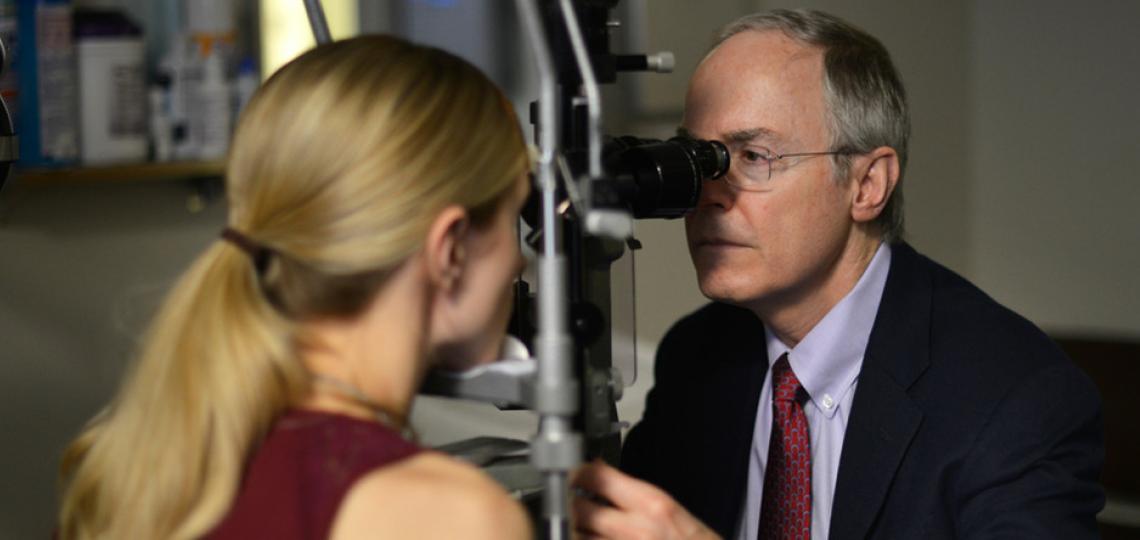
What Is a Cataract?
A cataract is a clouding of the lens in the eye. Cataracts typically grow slowly, causing decreased vision and also glare at night. While cataracts can affect people of all ages, they primarily affect adults over 50 and worsen with age.
Cataract surgery using lasers can offer additional precision and reduce the energy needed to remove your cataract. At Baylor Medicine, we offer a variety of premium options for cataract surgery, including the femtosecond laser technology, premium lens implants, and expertise in astigmatism correction.
The Femtosecond Laser
The FDA-approved femtosecond laser is the newest device in cataract surgery. The laser softens the cataract, which results in less ultrasound energy during the surgery. Lower energy results in less swelling and shorter recovery time after surgery. The laser helps surgeons customize the treatment plan and automate the most critical parts of the cataract surgery. The laser also softens and breaks up the hard cataract into tiny pieces allowing for gentler and easier cataract removal.
How It Works
Using a three-dimensional imaging method, the laser takes photographs and measurements of the eye to use in its treatment and helps to:
- Create the central opening in the capsule – the delicate, thin membrane that surrounds the cataract – with a level of consistency and predictability that is not available with manual techniques
- Perform fragmentation of the cataract, dividing it into small, soft pieces
- Reduce astigmatism
Astigmatism Correction
Astigmatism is an imperfection in the curvature of the cornea — the clear, round dome covering the eye's iris and pupil — or in the shape of the eye's lens, which causes blurry vision.
After cataract surgery, astigmatism may increase the patient’s dependence on glasses. Still, we can treat astigmatism either by inserting a special astigmatism-correcting lens implant or by using the femtosecond laser to make precise, delicate incisions in the cornea.
Premium Lenses
Many patients desire to be free of glasses after cataract surgery. We now have several different types of lens implants that can reduce the need for glasses. Imagine playing golf and being able to read the newspaper without needing glasses. Our doctors at Baylor Medicine are experienced and teach other surgeons about how to select the best lens to meet each patient’s visual needs. Talk to your doctor about which lens would be best for you.
More Information
Corneal Relaxing Incisions: AKs and PCRIs - May-June 2016
Peer Review. MillennialEYE. This review discusses the outcomes of relaxing incisions and includes current data based on the new femtosecond laser platforms.
Great Strides in Presbyopia Correction: A look at recent advances in IOL technology - Sept.-Oct. 2016
Peer Review. MillennialEYE. This article focuses on both low-add diffractive multifocal IOLs and the Symfony IOL.








